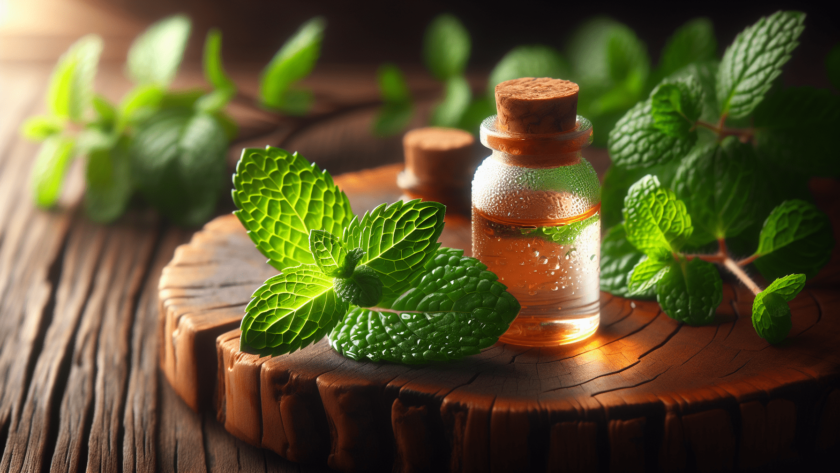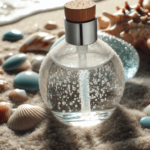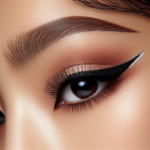Acne can be a persistent and frustrating skin condition that affects people of all ages. While there are countless products and treatments available in the market, many individuals are seeking a more natural approach to combat this common problem. In this article, we explore the quest for the best natural remedy for acne, providing insights into various options and their potential effectiveness. Whether you’ve tried numerous solutions or are just starting your journey towards clearer skin, this article aims to help you discover the natural remedy that could finally bring you relief.
Apple Cider Vinegar
Effectiveness of Apple Cider Vinegar for Acne
Apple Cider Vinegar has gained popularity as a natural remedy for various health conditions, including acne. The acetic acid present in apple cider vinegar has antimicrobial and anti-inflammatory properties, which can help treat acne. It also has the ability to balance the pH levels of the skin, promoting a healthy complexion. While research supporting the effectiveness of apple cider vinegar specifically for acne is limited, many individuals have reported positive results when using it as a topical treatment.
How to Use Apple Cider Vinegar for Acne
To use apple cider vinegar for acne, follow these steps:
- Dilute the vinegar: Mix equal parts of apple cider vinegar and water. This is important as undiluted vinegar can be too harsh and may cause skin irritation.
- Cleanse your face: Before applying the diluted solution, wash your face with a gentle cleanser to remove any dirt and oil.
- Apply the solution: Using a cotton ball or pad, apply the diluted apple cider vinegar to the affected areas of your skin. Avoid getting it near your eyes and mouth.
- Let it dry: Allow the solution to dry completely before applying any other products or moisturizers.
- Moisturize: After the apple cider vinegar has dried, apply a light, oil-free moisturizer to prevent any dryness or irritation.
It is recommended to start with a patch test on a small area of your skin to ensure that it does not cause any adverse reactions. If your skin becomes irritated or uncomfortable, discontinue use immediately.
Precautions and Side Effects of Apple Cider Vinegar
While apple cider vinegar can be effective for acne, it is important to take certain precautions and be aware of potential side effects. Apple cider vinegar is highly acidic, and using it undiluted or excessively can lead to skin irritation, redness, and even chemical burns. It is crucial to always dilute apple cider vinegar before applying it to the skin.
Furthermore, individuals with sensitive skin or conditions such as eczema or rosacea should exercise caution when using apple cider vinegar for acne. It is advisable to consult with a dermatologist before incorporating apple cider vinegar into your skincare routine, especially if you have any underlying skin conditions.
Tea Tree Oil
Effectiveness of Tea Tree Oil for Acne
Tea tree oil, derived from the leaves of the Melaleuca alternifolia tree, is another popular natural remedy for acne. It possesses powerful antimicrobial properties due to its active ingredient, terpinen-4-ol. This compound helps kill the bacteria that contribute to acne breakouts, reducing inflammation and promoting the healing process. Several studies have suggested that tea tree oil can be effective in treating mild to moderate acne.
How to Use Tea Tree Oil for Acne
When using tea tree oil for acne, it is crucial to properly dilute it to prevent skin irritation. Here is a step-by-step guide on how to use tea tree oil for acne:
- Dilute the tea tree oil: Mix a few drops of tea tree oil with a carrier oil such as jojoba oil or coconut oil. The recommended ratio is usually 1-2 drops of tea tree oil per teaspoon of carrier oil.
- Cleanse your face: Start by washing your face with a gentle cleanser to remove any impurities.
- Apply the diluted solution: Using a cotton swab or clean fingertips, apply the diluted tea tree oil to the affected areas of your skin. Be careful not to apply it to the entire face, as it can cause excessive dryness.
- Allow it to absorb: Let the diluted tea tree oil absorb into your skin for about 10-15 minutes.
- Moisturize: If needed, apply a lightweight moisturizer to prevent any dryness or irritation.
Just like with any new product, it is advisable to perform a patch test before using tea tree oil for acne to ensure that you do not have an adverse reaction. If you experience any severe skin irritation or discomfort, discontinue use immediately.
Precautions and Side Effects of Tea Tree Oil
While tea tree oil can be effective against acne, it is essential to be aware of certain precautions and potential side effects. Tea tree oil, when used in excessive amounts or applied to the skin undiluted, can cause skin irritation, redness, and even allergic reactions in some individuals. It is important to always dilute tea tree oil with a carrier oil before using it topically.
Additionally, tea tree oil can be toxic if ingested. Therefore, it should never be swallowed or used in large quantities. Keep tea tree oil out of reach of children and pets.
Honey
Effectiveness of Honey for Acne
Honey, a natural sweetener and ingredient commonly found in every kitchen, has been used for its medicinal properties for centuries. When it comes to acne, honey’s antibacterial and anti-inflammatory properties make it an appealing natural remedy. Its ability to inhibit the growth of certain bacteria that contribute to acne breakouts can help reduce inflammation and promote healing.
How to Use Honey for Acne
To use honey for acne, follow these simple steps:
- Choose the right honey: Opt for raw, organic honey, as it retains more beneficial properties compared to processed honey.
- Cleanse your face: Before applying the honey, wash your face with a gentle cleanser to remove any dirt or oil.
- Apply the honey: Using clean hands or a cotton swab, apply a thin layer of honey to the affected areas of your skin.
- Let it sit: Allow the honey to sit on your skin for 10-15 minutes.
- Rinse off: After the recommended time, gently rinse off the honey with lukewarm water. Pat your face dry with a clean towel.
- Moisturize: Apply a light, oil-free moisturizer to keep your skin hydrated.
Using honey as a spot treatment for individual acne blemishes is also an option. Simply apply a small amount of honey directly to the blemish and leave it overnight.
Precautions and Side Effects of Honey
While honey is generally safe to use for acne, it is important to consider a few precautions. Individuals with an allergy to honey or bee-related allergies should avoid using honey topically. Additionally, honey has a relatively high sugar content, so it is advisable to avoid applying it to large areas of the face or leaving it on for an extended period of time. Prolonged exposure to sugar can potentially feed acne-causing bacteria.
Consulting with a dermatologist before using honey as an acne remedy is recommended, especially if you have any known allergies or sensitivities.
Aloe Vera
Effectiveness of Aloe Vera for Acne
Aloe vera, commonly known for its soothing and healing properties, has also been used as a natural remedy for acne. The gel extracted from aloe vera leaves contains antioxidants, vitamins, and minerals that can help reduce inflammation, kill bacteria, and promote the healing process. Its moisturizing properties may also help prevent excessive dryness associated with acne treatments.
How to Use Aloe Vera for Acne
To use aloe vera for acne, follow these steps:
- Obtain fresh aloe vera gel: Cut open an aloe vera leaf and scoop out the clear gel from the inner part of the leaf. If fresh aloe vera is not available, you can use store-bought aloe vera gel, ensuring it is of high quality and does not contain any additional ingredients.
- Cleanse your face: Wash your face with a gentle cleanser to remove any impurities.
- Apply the aloe vera gel: Using clean hands or a cotton pad, apply a thin layer of aloe vera gel to the affected areas of your skin. Gently massage it in until fully absorbed.
- Let it dry: Allow the aloe vera gel to dry completely before applying any other products or moisturizers.
- Moisturize: If needed, apply a lightweight moisturizer to prevent any dryness or irritation.
It is also possible to combine aloe vera gel with other acne-fighting ingredients such as tea tree oil or honey to enhance its effectiveness. However, be cautious with any new combinations and discontinue use if any adverse reactions occur.
Precautions and Side Effects of Aloe Vera
Aloe vera is generally safe to use topically. However, some individuals may be allergic to aloe vera gel, experiencing skin irritation, redness, or itching. It is advisable to perform a patch test before applying aloe vera to your entire face. If any negative reactions occur, discontinue use immediately.
Consulting with a dermatologist is always a good idea, especially if you have any known allergies or skin sensitivities.
Green Tea
Effectiveness of Green Tea for Acne
Green tea, known for its numerous health benefits, is also gaining recognition as a potential natural remedy for acne. It contains antioxidants called catechins, which have been shown to exhibit anti-inflammatory and antimicrobial properties. These properties can help reduce acne-causing bacteria and inflammation, resulting in a clearer complexion.
How to Use Green Tea for Acne
To use green tea for acne, follow these steps:
- Brew a cup of green tea: Use high-quality, pure green tea leaves to ensure maximum benefits. Steep the tea bag or leaves in hot water for 3-5 minutes.
- Let it cool: Allow the brewed green tea to cool down to room temperature.
- Apply to your face: Gently apply the cooled green tea to your face using a clean cotton ball or pad. You can also transfer the tea to a spray bottle for easier application.
- Leave it on or rinse off: Depending on personal preference, you can leave the green tea on your skin or rinse it off after 10-15 minutes.
- Moisturize: Apply a suitable moisturizer afterward to prevent any dryness.
Green tea can also be combined with other ingredients such as honey or aloe vera gel to create a more potent acne-fighting mask. However, it is important to always perform a patch test before trying new combinations.
Precautions and Side Effects of Green Tea
Green tea is generally safe to use topically. However, it may cause irritation or allergic reactions in some individuals, especially those who are sensitive to caffeine. If you experience any negative reactions, discontinue use and consult with a dermatologist.
It is worth noting that consuming green tea orally may also provide additional health benefits, including potential improvements in acne symptoms. However, consult with a healthcare professional before making any significant changes to your diet or supplementation.
Witch Hazel
Effectiveness of Witch Hazel for Acne
Witch hazel, a natural astringent derived from the bark and leaves of the witch hazel plant, has been used for centuries in traditional medicine. It is known for its ability to reduce inflammation, control excess oil production, and prevent bacteria growth on the skin. Due to these properties, witch hazel is often recommended as a natural remedy for acne.
How to Use Witch Hazel for Acne
To use witch hazel for acne, follow these steps:
- Choose the right witch hazel product: Opt for alcohol-free witch hazel to avoid excessive drying and potential irritation. Look for 100% pure witch hazel products without any additional ingredients.
- Cleanse your face: Wash your face with a gentle cleanser to remove dirt and oil.
- Apply witch hazel: Using a cotton pad or ball, apply a small amount of witch hazel to the affected areas of your skin. Gently massage it in until fully absorbed.
- Let it dry: Allow the witch hazel to dry completely before applying any other products or moisturizers.
- Moisturize: Apply a lightweight, oil-free moisturizer to prevent any dryness or irritation.
It is important to note that witch hazel should only be used externally on the skin. Avoid direct contact with your eyes or ingestion of witch hazel.
Precautions and Side Effects of Witch Hazel
While witch hazel is generally safe for most people, it can potentially cause skin irritation, especially in individuals with sensitive skin. If redness, itching, or any other negative reactions occur, discontinue use immediately.
If you have any pre-existing skin conditions or concerns, it is always recommended to consult with a dermatologist before incorporating witch hazel into your skincare routine.
Turmeric
Effectiveness of Turmeric for Acne
Turmeric, a vibrant yellow spice commonly used in cooking, possesses anti-inflammatory and antibacterial properties that may be beneficial for acne-prone skin. Curcumin, the active compound in turmeric, helps to reduce inflammation and combat acne-causing bacteria, potentially leading to clearer skin.
How to Use Turmeric for Acne
To use turmeric for acne, follow these steps:
- Create a turmeric paste: Mix one teaspoon of turmeric powder with a few drops of water or a carrier oil, such as coconut oil or olive oil, to form a paste.
- Cleanse your face: Wash your face with a gentle cleanser before applying the turmeric paste to remove any impurities.
- Apply the paste: Using clean hands or a brush, apply the turmeric paste to the affected areas of your skin. Avoid the eye area and be cautious as turmeric can temporarily stain the skin.
- Let it sit: Allow the turmeric paste to dry on your skin for 15-20 minutes.
- Rinse off: Gently rinse off the turmeric paste with lukewarm water. You may need to use a mild cleanser or facial scrub to remove any residual yellow tint.
- Moisturize: Apply a lightweight, non-comedogenic moisturizer to keep your skin hydrated.
It is important to note that turmeric has the potential to stain clothing and other surfaces. Take precautions to prevent any unwanted staining.
Precautions and Side Effects of Turmeric
While turmeric is generally safe for topical use, it has the potential to stain the skin temporarily, especially in higher concentrations. Performing a patch test before applying turmeric to your entire face is advisable.
Additionally, individuals with known allergies to turmeric or related spices should avoid using it topically. If any adverse reactions occur, discontinue use immediately and consult with a healthcare professional.
Coconut Oil
Effectiveness of Coconut Oil for Acne
Coconut oil is a versatile natural remedy that has gained popularity in skincare routines. It contains lauric acid, which has antimicrobial properties, making coconut oil effective against acne-causing bacteria. Furthermore, its moisturizing properties can help balance the skin’s natural oils, potentially reducing acne breakouts.
How to Use Coconut Oil for Acne
To use coconut oil for acne, follow these steps:
- Choose the right coconut oil: Opt for organic, unrefined, virgin coconut oil to ensure the highest quality and maximum benefits for your skin.
- Cleanse your face: Wash your face with a gentle cleanser to remove impurities and excess oil.
- Apply a thin layer: Using clean fingertips or a cotton pad, apply a thin layer of coconut oil to the affected areas of your skin.
- Let it absorb: Allow the coconut oil to absorb into your skin for about 10-15 minutes.
- Rinse off or leave on: Depending on your preference and skin type, you can either leave the coconut oil on your skin or rinse it off with lukewarm water.
- Moisturize: Apply a suitable moisturizer, if needed, to prevent any dryness or irritation.
When using coconut oil, it is essential to remember that a little goes a long way. Using excessive amounts can lead to clogged pores and worsen acne breakouts. Start with a small amount and adjust accordingly based on your skin’s response.
Precautions and Side Effects of Coconut Oil
While coconut oil can provide benefits for acne-prone skin, it is not suitable for everyone. Coconut oil has a high comedogenic rating, meaning it has the potential to clog pores and worsen acne in some individuals. If you have oily or acne-prone skin, it is advisable to patch test coconut oil on a small area before applying it to your entire face.
If you experience any adverse reactions or notice an increase in breakouts after using coconut oil, discontinue use immediately and consult with a dermatologist.
Lemon Juice
Effectiveness of Lemon Juice for Acne
Lemons, rich in vitamin C and citric acid, have natural astringent and antimicrobial properties that can potentially help treat acne. The acidity of lemon juice can help exfoliate the skin, remove dead skin cells, and reduce excess oil production. However, it is important to note that lemon juice may not be suitable for everyone, as it can cause skin sensitivity.
How to Use Lemon Juice for Acne
To use lemon juice for acne, follow these steps:
- Obtain fresh lemon juice: Squeeze the juice from a fresh lemon, ensuring no seeds or pulp are included.
- Dilute the lemon juice: Mix equal parts of lemon juice and water to dilute the acidity. This step is crucial to avoid excessive skin irritation.
- Cleanse your face: Before applying the diluted lemon juice, cleanse your face with a gentle cleanser to remove any impurities.
- Apply the solution: Using a cotton pad or clean fingertips, gently apply the diluted lemon juice to the affected areas of your skin. Avoid the eye area and any open wounds.
- Let it absorb: Allow the lemon juice solution to absorb into your skin for 10-15 minutes.
- Rinse off: Gently rinse off the lemon juice with lukewarm water. Pat your face dry with a clean towel.
- Moisturize: Apply a lightweight, oil-free moisturizer to prevent any dryness or irritation.
It is essential to note that lemon juice can make your skin more sensitive to sunlight. Therefore, it is crucial to use sunscreen or limit sun exposure after using lemon juice on your skin.
Precautions and Side Effects of Lemon Juice
While lemon juice can be an effective natural remedy for acne, it is important to take precautions due to its acidity. Lemon juice can cause skin irritation, redness, dryness, and even chemical burns if used undiluted or in excessive amounts. Always dilute lemon juice with water before applying it to your skin.
Individuals with sensitive skin, existing skin conditions, or a history of citrus allergies should exercise caution when using lemon juice for skin treatments. Performing a patch test on a small area of your skin before applying it to your entire face is recommended.
Conclusion
Summary of Natural Remedies for Acne
In summary, natural remedies can be effective for managing acne. Apple cider vinegar, tea tree oil, honey, aloe vera, green tea, witch hazel, turmeric, coconut oil, and lemon juice have all been used to address acne symptoms. Each of these natural remedies offers unique properties that can help reduce inflammation, kill bacteria, balance oil production, or promote healing.
It is important to note that the effectiveness of these natural remedies can vary from person to person. What works well for one individual may not work as effectively for another. It may require some trial and error to find the best natural remedy for your specific skin type and concerns.
Importance of Consulting a Dermatologist
While natural remedies can be beneficial, it is crucial to consult with a dermatologist before incorporating new products or treatments into your skincare routine. A dermatologist can help determine the underlying causes of your acne and recommend appropriate treatments. They can also provide guidance on how to integrate natural remedies into your existing skincare regimen safely.
Remember that professional medical advice is always the most reliable source when it comes to addressing persistent or severe acne issues. A dermatologist can provide personalized recommendations based on your individual needs and help you achieve clear and healthy skin.




